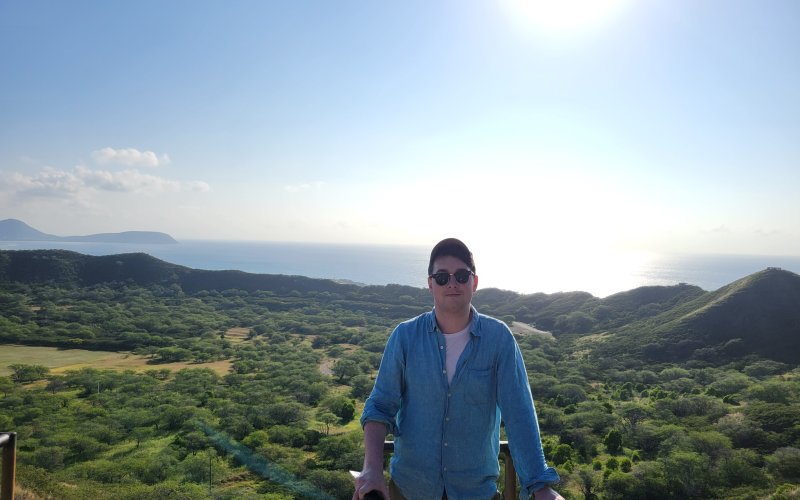Going to CAMP with John Angles

ALBANY, N.Y. (Feb. 6, 2023) – The field of biostatistics is foundational to public health but is often relegated to the background because it takes place behind the scenes. We sat down with John Angles, a third year PhD student in the biostatistics program, to talk about what biostatisticians do and why their work is so important.
Broadly speaking, biostatistics is the application of statistical methods to the study of living things. John Angles’ research focuses on applying these methods to research on infectious disease, disease surveillance, and the social determinants of health.
“I think that recent events have highlighted not only the importance of disease surveillance and the challenges we face in managing infectious disease outbreaks but also how people are impacted differently by these outbreaks,” Angles explains. “I think that by working to better understand infectious disease data we can work to make our public health systems better and more equitable.”
One major project that Angles has worked on throughout his time at UAlbany is known as the Coalition for Applied Modeling for Prevention, or CAMP. This research group is dedicated to creating models that improve public health decision-making at the national, state, and local levels. CAMP uses statistical and economic models alongside epidemic simulation to uncover new disease patterns and inform prevention policies in five areas: HIV, viral hepatitis, sexually transmitted infections, tuberculosis, and school/adolescent health.
Modeling offers a ways of understanding data when researchers do not have a full picture of what is happening, which according to Angles is “almost always the case when working with public health data. There are so many different factors that can impact health, that it's usually impossible to collect information on everything.”
When data is incomplete, modeling uses what is already known to make an educated guess as to what the data is telling researchers about the object of study. “There's a famous quote often attributed to George Box which says, ‘All models are wrong, but some are useful.’ It's important to remember that no model will ever be perfect, but a ‘useful’ model will still help us understand our observations,” says Angles.
During his time as a Project Collaborator, Angles has focused primarily on sexually transmitted infections. He works on aberration detection, which “is basically about finding outliers (very unusual datapoints) in a given dataset. Once a potential anomaly has been found, further exploration can help point to a cause, and ideally a fix for the aberration.”
Aberration detection is particularly important for disease surveillance, where anomalies can signal that a disease is behaving in new or unexpected ways.
“While our collaborators at CDC already engage in multiple activities to identify data aberrations, the modeling tool we're working on at CAMP will help to improve these existing activities and broaden the types of aberrations they are able to find,” Angles explains.
One advantage of working in a field like biostatistics, according to Angles, is how multidisciplinary it is: “Public health is such a broad subject, and having insight from experts in different fields is extremely valuable. Working with CAMP has given me the opportunity to collaborate not only with experts in epidemiology and biostatistics but people with expertise in a wide variety of fields including public policy and law.”
As the world slowly emerges from the SARS-CoV-2 pandemic, disease surveillance will be crucial to ensure we are prepared for the next public health threat. Fortunately, biostatisticians like John Angles are up to the challenge.


